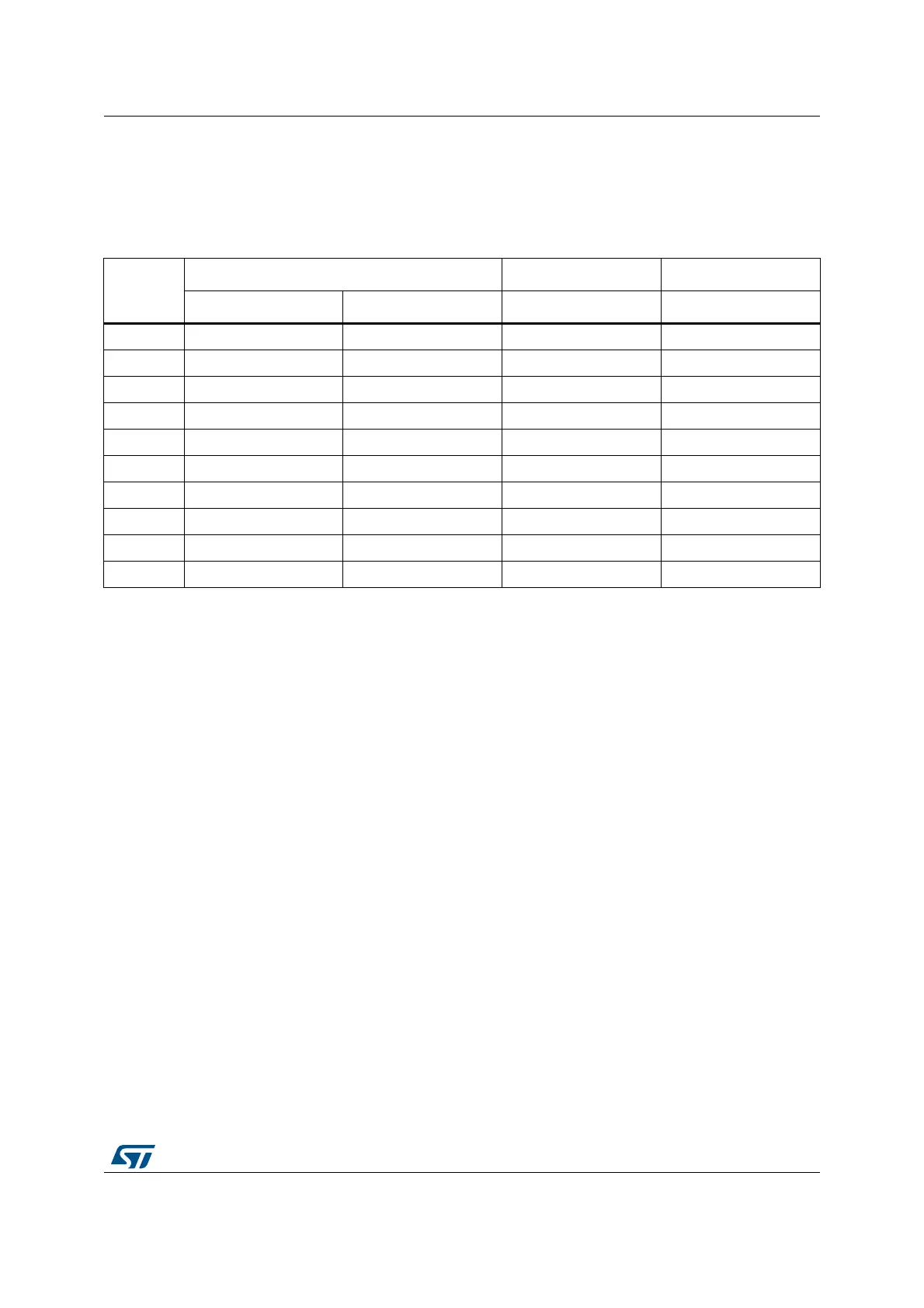RM0440 Rev 4 1893/2126
RM0440 Inter-integrated circuit (I2C) interface
1928
41.4.11 SMBus specific features
This section is relevant only when SMBus feature is supported. Refer to Section 41.3: I2C
implementation.
Introduction
The System Management Bus (SMBus) is a two-wire interface through which various
devices can communicate with each other and with the rest of the system. It is based on I
2
C
principles of operation. SMBus provides a control bus for system and power management
related tasks.
This peripheral is compatible with the SMBus specification (http://smbus.org).
The System Management Bus Specification refers to three types of devices.
• A slave is a device that receives or responds to a command.
• A master is a device that issues commands, generates the clocks and terminates the
transfer.
• A host is a specialized master that provides the main interface to the system’s CPU. A
host must be a master-slave and must support the SMBus host notify protocol. Only
one host is allowed in a system.
This peripheral can be configured as master or slave device, and also as a host.
2. t
SYNC1 +
t
SYNC2
minimum value is 4 x t
I2CCLK
= 250 ns. Example with t
SYNC1 +
t
SYNC2
= 1000 ns.
3. t
SYNC1 +
t
SYNC2
minimum value is 4 x t
I2CCLK
= 250 ns. Example with t
SYNC1 +
t
SYNC2
= 750 ns.
4. t
SYNC1 +
t
SYNC2
minimum value is 4 x t
I2CCLK
= 250 ns. Example with t
SYNC1 +
t
SYNC2
= 500 ns.
Table 382. Examples of timings settings for f
I2CCLK
= 48 MHz
Parameter
Standard-mode (Sm) Fast-mode (Fm) Fast-mode Plus (Fm+)
10 kHz 100 kHz 400 kHz 1000 kHz
PRESC 0xB 0xB 5 5
SCLL 0xC7 0x13 0x9 0x3
t
SCLL
200 x 250 ns = 50 µs 20 x 250 ns = 5.0 µs 10 x 125 ns = 1250 ns 4 x 125 ns = 500 ns
SCLH 0xC3 0xF 0x3 0x1
t
SCLH
196 x 250 ns = 49 µs 16 x 250 ns = 4.0 µs 4 x 125 ns = 500 ns 2 x 125 ns = 250 ns
t
SCL
(1)
~100 µs
(2)
~10 µs
(2)
~2500 ns
(3)
~875 ns
(4)
SDADEL 0x2 0x2 0x3 0x0
t
SDADEL
2 x 250 ns = 500 ns 2 x 250 ns = 500 ns 3 x 125 ns = 375 ns 0 ns
SCLDEL 0x4 0x4 0x3 0x1
t
SCLDEL
5 x 250 ns = 1250 ns 5 x 250 ns = 1250 ns 4 x 125 ns = 500 ns 2 x 125 ns = 250 ns
1. The SCL period t
SCL
is greater than t
SCLL
+ t
SCLH
due to the SCL internal detection delay. Values provided for t
SCL
are only
examples.
2. t
SYNC1 +
t
SYNC2
minimum value is 4x t
I2CCLK
= 83.3 ns. Example with t
SYNC1 +
t
SYNC2
= 1000 ns
3. t
SYNC1 +
t
SYNC2
minimum value is 4x t
I2CCLK
= 83.3 ns. Example with t
SYNC1 +
t
SYNC2
= 750 ns
4. t
SYNC1 +
t
SYNC2
minimum value is 4x t
I2CCLK
= 83.3 ns. Example with t
SYNC1 +
t
SYNC2
= 250 ns

